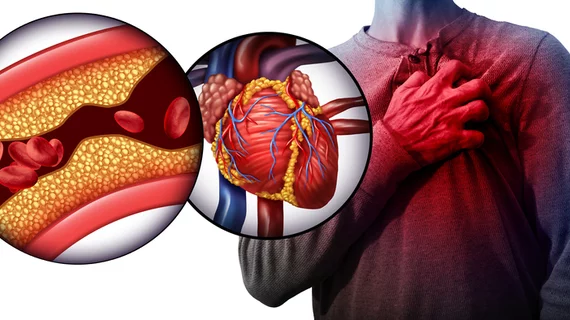Photon-counting CT boosts image quality and reader confidence in identifying coronary artery disease
A new study published in Radiology highlights the diagnostic benefits of photon-counting CT systems when used for coronary CT angiography.
The study compared the diagnostic quality of a photon-counting CT (PCCT) to an energy-integrating detector (EID) dual-layer CT system. The study results revealed PCCT to be not just comparable to conventional CT, but superior to it in terms of image quality and reader confidence for identifying and grading coronary calcifications, stents and noncalcified plaques.
Coronary CT angiography (CCTA) is a valuable tool for the detection of various cardiovascular diseases. However, CCTA has somewhat limited spatial resolution and soft-tissue contrast, which can degrade its utility for evaluating things like noncalcified plaques, stents and small arteries. It also comes at the expense of an increased radiation dose.
Conversely, photon-counting CT technology offers higher spatial resolution and soft tissue contrast.
“This is because of new energy-resolving detectors, called photon-counting detectors (PCDs), that register separately the energy of each photon, thus allowing a better measurement of the transmitted spectrum,” corresponding author Salim A. Si-Mohamed, from the department of radiology at Louis Pradel Hospital in France, and co-authors explained. “PCCT systems have evolved considerably, with recent developments enabling human imaging.”
With the utility of PCCT still being relatively limited, researchers sought to test its efficacy on patients with known coronary artery disease. A total of 14 patients were enrolled in the study and each underwent CCTA with both systems (conventional and photon-counting). Three cardiac radiologists then analyzed the scans before grading them for quality and diagnostic confidence using a five-point scale.
Overall, the scores of the PCCT images were higher (median score of 5) than that of the conventional CCTA scans (median score of 4). The image quality of calcifications, stents and noncalcified plaques were significantly improved as well.
“All radiologists noticed a greater diagnostic confidence for PCCT images, with improvement for more than half of the cases, without influence from their different experience levels,” the experts disclosed. “This further highlights the importance of image quality improvement and brings one more stone to the promising role that PCCT may play as a tool for CAD imaging.”
The results of the study are promising for the future of PCCT in cardiovascular imaging, but further studies on larger cohorts are necessary, the experts suggested.
You can view the detailed research in Radiology.

